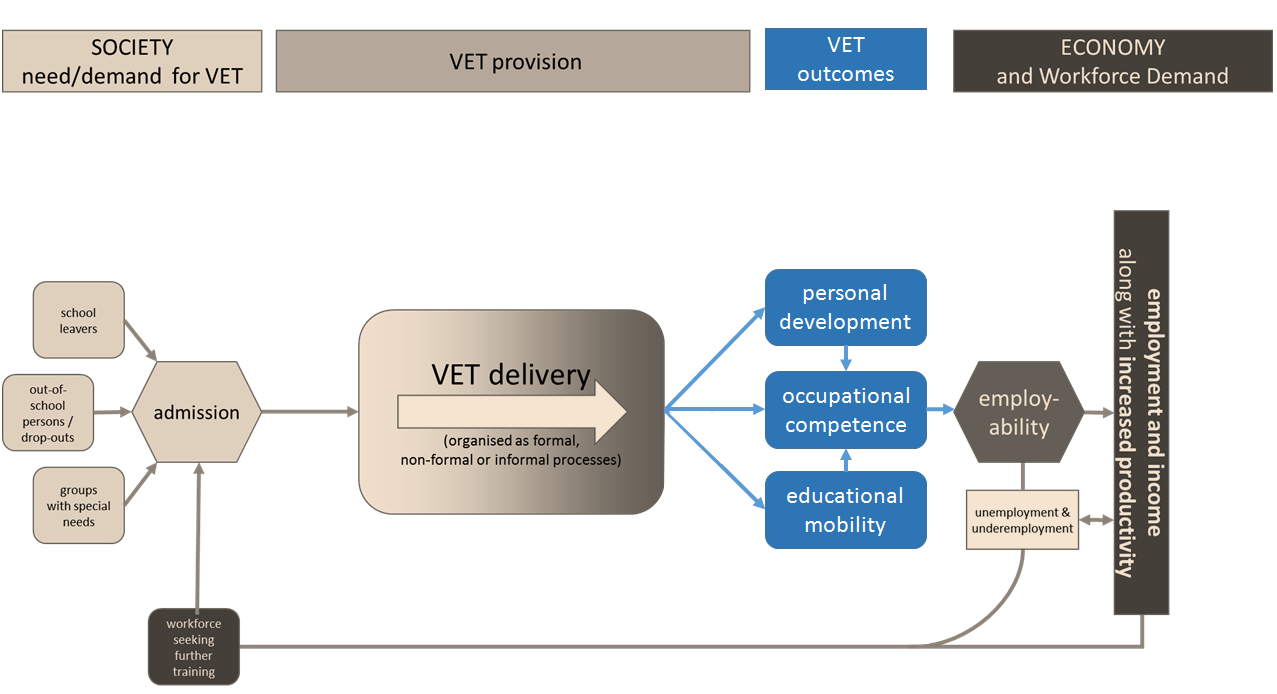In this subchapter, the main dimensions of the expected outcomes of VET systems will be discussed one by one. The dimension are highlighted blue in the graph below.

Firstly
personal development refers to the fact that VET primarily addresses young people between 15 and 25 years of age who are not only in a transition process from school to work but also in a difficult transition period from childhood to adulthood. They need orientation and have to develop values and self-esteem in order to build up their individual identity. This is also true for many unemployed people and in particular for special needs groups. Society expects them to become good technicians, craftspeople, salespeople or clerks, but also to develop into good citizens and responsible fathers or mothers. That is why VET, at least for young people and special needs groups, has to impart
personal skills,
social skills, and
life skills as well as occupational competencies.
Secondly,
occupational competence starts with having the technical skills and knowledge that are needed to perform a job well. But it is not limited to this dimension. It also comprises elements of what was mentioned before – personal and social skills – as well as certain more general or "meta-skills" that are becoming more and more important, like teamwork, customer orientation, and the ability to learn and organise by oneself. Moreover, entrepreneurial skills are gaining importance in our partner countries where self-employment is often the most realistic option for many VET graduates.
Finally, the concept of
educational mobility refers to the recognition of VET certificates within the overall education system in a country or internationally. In order to make VET more attractive, and to stimulate lifelong learning, VET graduates receive credits that provide or facilitate access to higher levels of VET, or to higher education in the general education system. This means that VET has to give adequate consideration to general education subjects and international standards and regulations, in order to open up such pathways.
Each VET system, and each specific training programme, has to find its own appropriate and balanced mix of these three areas – personal development, occupational competence and educational mobility – according to its objectives and priorities, and to the target groups it addresses.
In our partner countries the adequate consideration of these three dimensions of VET is of specific importance for two reasons:
- First, the general education systems are often weak, and therefore VET addresses target groups who need complementary general education in order to cope with the requirements of the training programmes. That is why the combination of basic education with VET is a common feature in many donor programmes;
- Secondly, many VET participants live in deprived urban or remote rural areas and grow up in fragile economic, social and family contexts. They lack self-esteem and are vulnerable to risky forms of deviant behaviour, such as dropping out, drug consumption, gangs, violence, crime and teenage pregnancy.
